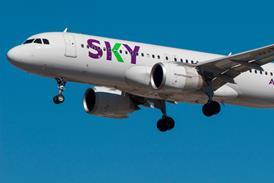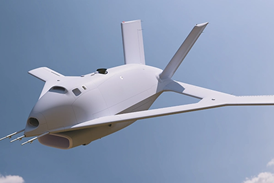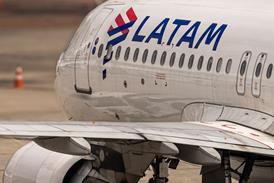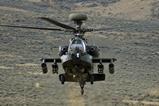Emerging aviation technologies developer Aurora Flight Sciences is progressing with assembly of its prototype X-65 active flow control demonstrator.
Aurora on 20 November shared an image of the X-65 aerostructure and partially assembled fuselage at a facility in Bridgeport, West Virgina. The company also released a new rendering of the full-scale X-65 design, adding detail to earlier subscale test models.
Active flow control (AFC) refers to the use of actuators and effectors embedded in the fuselage to aerodynamically control an aircraft by shaping surface airflow or directly adding energy or momentum.
The concept is meant to eliminate the use of moving control surfaces like rudders, flaps and ailerons required to fly current fixed-wing aircraft. Aurora has suggested an AFC design could reduce a vehicle’s weight, lower complexity and improve aerodynamic efficiency.

Funding for the design and fabrication of the X-65 prototype has come from the US Defense Advanced Research Projects Agency (DARPA), which awarded Aurora a $42 million development contract under the Control of Revolutionary Aircraft with Novel Effectors (CRANE) programme.
“We’re excited to continue our longstanding partnership with DARPA to complete the build of the X-65 aircraft and demonstrate the capabilities of active flow control in flight,” says Larry Wirsing, Aurora’s vice-president of aircraft development.
In August, the company reached an agreement with DARPA to “co-invest” in the completion of an X-65 demonstrator and first flight.
Completion of a full-scale X-65 fuselage is now expected in January 2026.
Aurora began assembly work on the X-plane in early 2024, progressing into the manufacturing phase of the CRANE project after roughly a year of detailed design and test work, which included windtunnel trials with a subscale model and passing a DARPA critical design review.
The X-65 fuselage, wing assemblies and engine diffuser for the novel aircraft are all being manufactured in Aurora’s West Virginia facility. An unspecified propulsion solution and the all-important AFC control system components are already on-site and ready for integration, Aurora says.
The latest rendering of the X-65 indicates a large, centerline air intake mounted on the ventral fuselage, likely indicative of a single jet engine.
Aurora has previously said the X-plane will be able to reach speeds up to 463kt (857km/h) – equivalent to Mach 0.7.
Two smaller air intakes are also visible on the X-65’s nose and dorsal fuselage sections. These may be related to the AFC system at the heart of the X-65, which Aurora says will supply pressurised air to 14 effectors embedded across all flying surfaces of the aircraft.
The final design features a 9.1m (30ft) wingspan and 3,175kg (7,000lb) gross weight, notable for a radical triangular wingshape with centre cutouts.
“The triangular wing design enables testing across multiple wing sweeps and is modular with replaceable outboard wings and swappable AFC effectors to allow for future testing of additional AFC designs,” Aurora notes.
Although not specified, the design of the X-65 clearly indicates it will be an uncrewed aircraft.

DARPA has previously stated its goal for the CRANE programme is to advance the technology associated with AFC and explore the concept’s potential for future use in both commercial and military aircraft.
“Active flow control could improve aircraft performance by removing jointed surfaces, which currently drive design configurations that increase weight and mechanical complexity,” the agency said in 2022.
Even if Aurora successfully flies the X-65, there is no guarantee of an ensuing production contract.
DARPA’s model is to invest in maturing nascent technologies, often to the point of developing a working prototype, which is then turned over to the various US military services for further consideration.
Some projects, such as the Liberty Lifter heavy-lift seaplane, get dropped before advancing to the build phase if DARPA does not feel the concept proposals hold sufficient promise.
Aurora was the sole remaining finalist for that programme when DARPA terminated work on the Liberty Lifter in July. The agency told FlightGlobal at the time that it was able to validate the heavy-lift seaplane concept using simulations and materials testing, and saw no need to fund construction of a demonstrator aircraft.
Unlike that case, the X-65 will become a flight-capable vehicle. Wirsing says Aurora hopes to make use of it even beyond the CRANE programme.
“The X-65 platform will be an enduring flight test asset, and we’re confident that future aircraft designs and research missions will be able to leverage the underlying technologies and flight test data,” he says.
It is unclear when the X-plane will be ready for physical flying. Aurora had previously said it was targeting the middle of 2025 for the start of flight testing.
Aurora Flight Sciences is a subsidiary of aircraft manufacturer Boeing.































